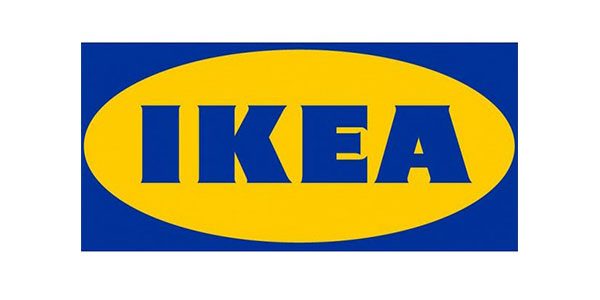
Achieving Business Excellence - through the EFQM model
- TP Anand |
- Jan 2, 2020 |
- Business
What do big businesses do right that small businesses don’t? Are the knowledge and know-how used by big businesses available to small businesses? How can small and medium businesses achieve excellence that their bigger counterparts achieve?
First, let’s answer the question, what is business excellence?
Business Excellence is described as outstanding practices in managing the organization and achieving results, all based on a set of fundamental concepts or values. These practices have evolved into models for how a world class organisation should operate.
EFQM is one such model developed for achieving business excellence.
So how does the EFQM model propose we achieve business excellence? Read on!
The model is based on eight concepts, which we list down below:
- Adding value to customers
- Creating a sustainable future
- Developing organisational capability
- Harnessing creativity and innovation
- Leading with vision, inspiration and integrity
- Managing with ability
- Succeeding through the talent of people
- Sustaining outstanding results
Let’s now take a brief look at them individually.
Adding Value to Customers
Adding value to customers can be done by various tools such as online ordering, mobile app, integrated maintenance, 24/7 service, etc which demonstrates the commitment of the organisation to enhance its customer relationship.
Adding value would then be a result of understanding, anticipating and fulfilling needs, expectations and opportunities of the customers.
Case in hand:
In the first quarter of 2019, IKEA launched a new initiative for customers to rent furniture instead of buying if they know for how long they would use. This is a great initiative as it would ensure that the customers do not use the flatpack furniture just for few months and then throw them away. As the pilot project was a great hit, IKEA decided to roll out the same in stores across the world.

Creating a sustainable future
Sustainable development is development that meets the needs of the present without compromising the ability of future generations to meet their own needs.
A business can focus on creating a sustainable future by encouraging and promoting eco-friendly practices such as green initiative, implementing energy conservation measures, measuring and reducing its carbon footprint, etc.
Case in hand:
Tata Steel, the second-largest steel producer in Europe and India, introduced the “Pravesh” doors, which are made of steel for homes and commercial buildings. A tree would be saved for every two Pravesh doors bought by customers leading to a better eco-friendly alternative to wooden doors.
The advertisement for the Pravesh doors opens the viewers’ mind as to how we should care about future generations while taking decisions.

Developing organisational capability
Businesses striving for excellence enhance their capabilities by effectively managing change within and beyond organisational boundaries.
An example of managing capabilities beyond organisational boundaries would be developing effective and efficient value chain regular and continuous engagement with suppliers, strategic partners and distributors.
Case in hand:
In September 2018, John Deere released their strategy report outlining the Company’s focus area up to 2050 when there would be 9.7 billion people on the planet. Click here for their video which explains it all.

Harnessing creativity and innovation
Attaining excellence through continual improvement and systematic innovation by harnessing the creativity of its stakeholders leads to businesses having increased ability to generate value and higher levels of performance.
Some tools that can be used for harnessing the creativity of stakeholders are intranet portals to helps communication and development of ideas, business analytical tools to support decision making and flexibility of leaders in decision making.
Case in hand:
3M is an organisation which has championed the power of harnessing creativity and innovation. It did so by encouraging everyone to come with new ideas and solutions in terms of products, processes and services. It is an outstanding example of how to develop intrapreneurship as every new idea is spun-off as a strategic business unit and the creator of the idea is given the chance to run the unit as its business head.

Leading with vision, inspiration & integrity
Excellence in business can only be achieved if it is led by leaders who shape the future, acting as role models of its values.
A strong will and determination at the top to remain successful regardless of growing competition help keep the organisation profitable and growing steadily despite an economic slowdown.
Case in hand:
Apple was on the edge of bankruptcy in 2001, barely having cash in hand to meet a week of expenses when Steve Jobs re-joined the company. His vision, inspiration and leadership helped steer the Company to great heights in 10 years. This is a great example of a leader with vision, inspiration and integrity turning around a failing company into one of the world’s largest organisations.

Managing with agility
The ability to identify and respond effectively and efficiently to opportunities and threats is one that is often overlooked by many in business. This perhaps one of the most important traits of a business which will define its relative success over its peers.
Knowing when and how to respond to a change in the business environment before it happens is a skill that differentiates a good business from its competitors.
Case in hand:
Indira Nooyi, the former head of Pepsico, guided the company from being a 100% beverage company to a mix of food (53%) and beverage (47%) in 15 years. This helped PepsiCo grow to great heights which would have been impossible had it stuck to being a beverage only company.

Succeeding through the talent of people
Organisations that realise the value of their people resources and create a culture of empowerment for the achievement of organisational and personal goals end up with a highly motivated and productive workforce.
Case in hand:
Google is a great example of a company that succeeds and stays at the forefront of the industry through the talent of people. It does so by recognising and rewarding talented people at the right time. Sundar Pichai was made CEO of Google and much recently of its parent company Alphabet Inc demonstrating its commitment to its star employees.

Sustaining outstanding results
Sustained outstanding results are those that meet both short and long term needs of all their stakeholders, within the context of their operating environment. This would first mean planning and setting reasonable and achievable targets and then taking decisions for attainment of the same.
Case in hand:
Microsoft is a great example of how a business can achieve sustained outstanding results to achieve excellence. It has been sustaining outstanding results since 1975 in their operating environment, i.e., software. The business has grown consistently by increasing its offerings portfolio through both strategic acquisitions as well as inhouse development.

So yes, the good news is that every business can achieve excellence regardless of size!
Every big change starts with small steps. So we encourage you to go back to your business, identify how the EFQM model can be applied and let us know what you think would be the improvement in results in the comments below. I bet you will have something to say!


